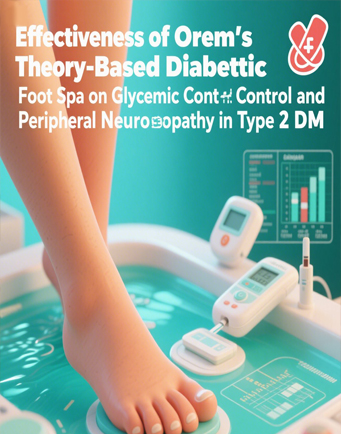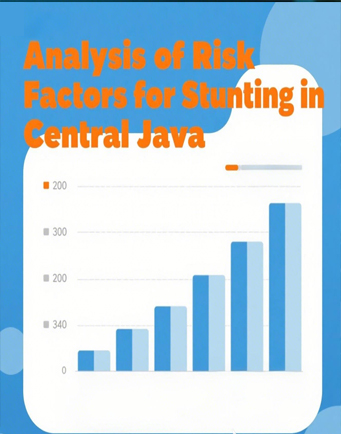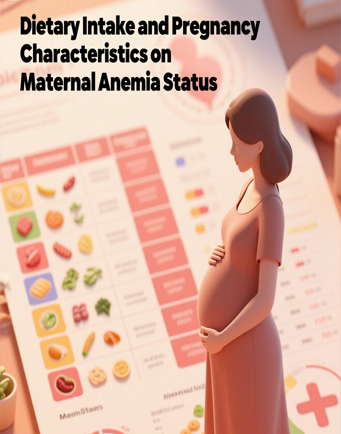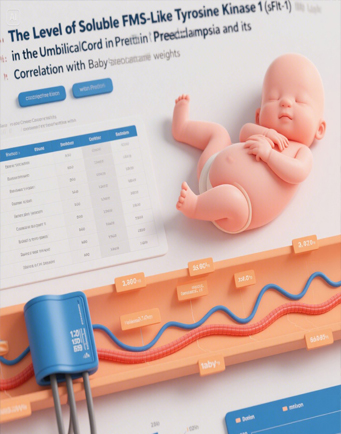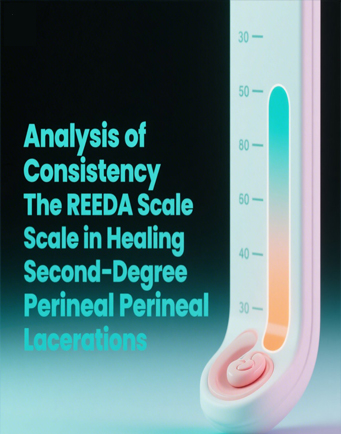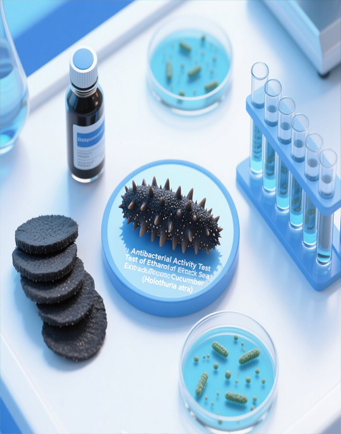Moringa oleifera as Anticancer: A Review of Recent Studies
Downloads
Moringa oleifera Lam (MO) plants have long been reported to have many pharmacotherapy benefits. In vitro and in vivo studies have shown that MO extracts have various biological activities and therapeutic effects, including cardioprotective, cardiometabolic, hypocholesterolemic, neuroprotective, anti-inflammatory, antioxidant, anti-hypertensive, anti-diabetic, anti-bacterial, immunomodulatory and anticancer. Researchers have tested extracts from various parts of the MO tree, both in vitro and in vivo, on several types of cancer (such as liver cancer cells, breast cancer, colorectal, leukemia, lung cancer, and oral cancer) with varying success. This review aims to explore the current state of the latest anticancer activity research of MO plants in the last five years. We tried to explore the anticancer activities of MO extracts from reported in vivo and in vitro studies. We searched systematically from three databases (PubMed, Scopus, and Embase) and summarized the data. The keywords used were “Moringa oleifera” AND “anticancer” AND “in vivo” OR “in vitro”. The inclusion criteria were in vivo or in vitro experimental studies and exclusion criteria analyses i.e., in silico trials, study protocols, reviews, or observational studies. This review includes 16 papers on nonclinical studies of MO anticancer activity. Several active compounds have been purified and have reported their anticancer effectiveness, including glucomoringin-ITC/MIC-1, 7-octanoic acid, oleamide, 1-phenyl-2-pentanol, quercetin, gallic acid, p-coumaric acid, and 4-hydroxy 3 – methoxy cinnamic acid, quinic acid. There was no difference in the mechanism of anticancer action based on plant parts, leaves, roots, and seeds, even though using different extraction methods. The general mechanism of action shown was apoptotic, antiproliferative, and cytotoxic. The dose used differed depending on the type of cancer cells used. Some used conventional extraction methods, and others have used modern techniques to extract the purified active compounds from the fractionation process. Our review made it clear that MO could be an excellent and safe candidate for the development of novel therapies against cancer and was most commonly reported in MCF-7, HepG2, and HCT-116 cancer cells. In addition, the development of MO products as future cancer prevention is also interesting to be explored and developed optimally in clinical settings.
Abd Rani, N. Z., Kumolosasi, E., Jasamai, M., Jamal, J. A., Lam, K. W., & Husain, K. (2019). In vitro anti-allergic activity of Moringa oleifera Lam. extracts and their isolated compounds. BMC Complementary and Alternative Medicine, 19(1), 1–16. https://doi.org/10.1186/s12906-019-2776-1
Abd-Rabou, A. A., Abdalla, A. M., Ali, N. A., & Zoheir, K. M. A. (2017). Moringa oleifera root induces cancer apoptosis more effectively than leave nanocomposites and its free counterpart. Asian Pacific Journal of Cancer Prevention, 18(8), 2141–2149. https://doi.org/10.22034/APJCP.2017.18.8.2141
Aldakheel, R. K., Rehman, S., Almessiere, M. A., Khan, F. A., Gondal, M. A., Mostafa, A., & Baykal, A. (2020). Bactericidal and in vitro cytotoxicity of moringa oleifera seed extract and its elemental analysis using laser-induced breakdown spectroscopy. Pharmaceuticals, 13(8), 1–18. https://doi.org/10.3390/ph13080193
Badan Penelitian dan Pengembangan Kesehatan, Kementerian Kesehatan Republik Indonesia. (2019). Laporan Nasional Riskesdas 2018. Jakarta: Badan Penelitian dan Pengembangan Kesehatan, Kementerian Kesehatan Republik Indonesia.
Barhoi, D., Upadhaya, P., Barbhuiya, S. N., Giri, A., & Giri, S. (2021). Aqueous extract of Moringa oleifera exhibit potential anticancer activity and can be used as a possible cancer therapeutic agent: A study involving in vitro and in vivo approach. Journal of the American College of Nutrition, 40(1), 70–85. https://doi.org/10.1080/07315724.2020.1735572
Bhadresha, K. P., Jain, N. K., & Rawal, R. M. (2022). Assessing the protective effect of Moringa oleifera extract against bone metastasis: an invitro simulated digestion approach. Nutrition and Cancer, 74(3), 1023–1036. https://doi.org/10.1080/01635581.2021.1933099
Choudhary, R., Kumari, A., Kachhwaha, S., Kothari, S. L., & Jain, R. (2024). Moringa oleifera: Biosynthesis strategies for enhanced metabolites and role in green nanoparticle synthesis. In South African Journal of Botany (Vol. 170, pp. 271–287). Elsevier B.V. https://doi.org/10.1016/j.sajb.2024.05.009
Das, M., Mohanty, J. N., Bhuyan, S. K., & Bhuyan, R. (2024). Anti-cancer activity of Moringa oleifera Lam. seed oil on oral cancer. Beni-Suef University Journal of Basic and Applied Sciences, 13(1). https://doi.org/10.1186/s43088-024-00475-z
de Andrade Luz, L., Rossato, F. A., Costa, R. A. P. e., Napoleão, T. H., Paiva, P. M. G., & Coelho, L. C. B. B. (2017). Cytotoxicity of the coagulant Moringa oleifera lectin (cMoL) to B16-F10 melanoma cells. Toxicology in Vitro, 44(February), 94–99. https://doi.org/10.1016/j.tiv.2017.06.019
Diab, K. A. E., Guru, S. K., Bhushan, S., & Saxena, A. K. (2015). In vitro anticancer activities of Anogeissus latifolia, Terminalia bellerica, Acacia catechu and Moringa oleiferna Indian plants. Asian Pacific Journal of Cancer Prevention, 16(15), 6423–6428. https://doi.org/10.7314/APJCP.2015.16.15.6423
Do, B. H., Hoang, N. S., Nguyen, T. P. T., Ho, N. Q. C., Le, T. L., & Doan, C. C. (2021). Phenolic extraction of Moringa Oleifera leaves induces caspase-dependent and caspase-independent apoptosis through the generation of reactive oxygen species and the activation of intrinsic mitochondrial pathway in human melanoma cells. Nutrition and Cancer, 73(5), 869–888. https://doi.org/10.1080/01635581.2020.1776885
Do, B. H., Nguyen, T. P. T., Ho, N. Q. C., Le, T. L., Hoang, N. S., & Doan, C. C. (2020). Mitochondria-mediated Caspase-dependent and Caspase-independent apoptosis induced by aqueous extract from Moringa oleifera leaves in human melanoma cells. Molecular Biology Reports, 47(5), 3675–3689. https://doi.org/10.1007/s11033-020-05462-y
Edlich, F. (2018). BCL-2 proteins and apoptosis: Recent insights and unknowns. Biochemical and Biophysical Research Communications, 500(1), 26–34. https://doi.org/10.1016/j.bbrc.2017.06.190
Elsayed, E. A., Sharaf-Eldin, M. A., & Wadaan, M. (2015). In vitro evaluation of cytotoxic activities of essential oil from Moringa oleifera seeds on HeLa, HepG2, MCF-7, CACO-2 and L929 cell lines. Asian Pacific Journal of Cancer Prevention, 16(11), 4671–4675. https://doi.org/10.7314/APJCP.2015.16.11.4671
Esparza, C., Estrada, R., Sanchez, D. S., Saenz-Galindo, A., Valdes, J. A. A., Flores-Gallegos, A. C., & Rodríguez-Herrera, R. (2024). Ultrasound and microwave extraction from Moringa oleifera Lam.: Characterization and antiproliferative effect. International Journal of Secondary Metabolite, 11(2), 292–304. https://doi.org/10.21448/ijsm.1363300
Ghosh, A., Roychowdhury, T., Nandi, R., Maiti, R., Ghosh, N. N., Molla, S. A., Mukhopadhyay, S., Prodhan, C., Chaudhury, K., Das, P., Sarkar, N. K., Chattopadhyay, S., Bhattacharya, R., Bose, C. K., & Maiti, D. K. (2021). Inhibitory role of a smart nano-trifattyglyceride of Moringa oleifera root in epithelial ovarian cancer, through attenuation of FSHR - c-Myc axis. Journal of Traditional and Complementary Medicine, 11(6), 481–492. https://doi.org/10.1016/j.jtcme.2021.03.005
Hadi, R. S. (2011). Mekanisme apoptosis pada regresi sel luteal. Majalah Kesehatan PharmaMedika, 3(1), 246–254.
Hafezi, S., & Rahmani, M. (2021). Targeting BCL-2 in Cancer: Advances, Challenges, and Perspectives. Cancers, 13(1292), 1–15.
Khor, K. Z., Lim, V., Moses, E. J., & Abdul Samad, N. (2018). The in vitro and in vivo anticancer properties of Moringa oleifera. Evidence-Based Complementary and Alternative Medicine, 2018. https://doi.org/10.1155/2018/1071243
Luo, X., O’Neill, K. L., & Huang, K. (2020). The third model of Bax/Bak activation: A Bcl-2 family feud finally resolved? F1000Research, 9, 1–15. https://doi.org/10.12688/f1000research.25607.1
Mohamed, M., Ibrahim, M., Abdel-Azim, N., & El-Missiry, M. (2021). Chemical and biological studies on Moringa oleifera L. cultivated in Egypt. Egyptian Pharmaceutical Journal(Egypt), 20(1), 33–41. https://doi.org/10.4103/epj.epj_37_20
Mohd Fisall, U. F., Ismail, N. Z., Adebayo, I. A., & Arsad, H. (2021). Dichloromethane fraction of Moringa oleifera leaf methanolic extract selectively inhibits breast cancer cells (MCF7) by induction of apoptosis via upregulation of Bax, p53 and caspase 8 expressions. Molecular Biology Reports, 48(5), 4465–4475. https://doi.org/10.1007/s11033-021-06466-y
Mumtaz, M. Z., Kausar, F., Hassan, M., Javaid, S., & Malik, A. (2021). Anticancer activities of phenolic compounds from Moringa oleifera leaves: in vitro and in silico mechanistic study. Beni-Suef University Journal of Basic and Applied Sciences, 10(1). https://doi.org/10.1186/s43088-021-00101-2
Rajan, T. S., De Nicola, G. R., Iori, R., Rollin, P., Bramanti, P., & Mazzon, E. (2016). Anticancer activity of glucomoringin isothiocyanate in human malignant astrocytoma cells. Fitoterapia, 110, 1–7. https://doi.org/10.1016/j.fitote.2016.02.007
Susanto, H., Firdaus, S. R. A., Sholeh, M., Endharti, A. T., Taufiq, A., Malek, N. A. N. N., & Permatasari, H. K. (2024). Moringa oleifera Leaf Powder – Silver Nanoparticles (MOLP-AgNPs) efficiently inhibit metastasis and proliferative signaling in HT-29 human colorectal cancer cells. Journal of Agriculture and Food Research, 16. https://doi.org/10.1016/j.jafr.2024.101149
Wisitpongpun, P., Suphrom, N., Potup, P., Nuengchamnong, N., Calder, P. C., & Usuwanthim, K. (2020). In vitro bioassay-guided identification of anticancer properties from Moringa oleifera lam. Leaf against the mda-mb-231 cell line. Pharmaceuticals, 13(12), 1–20. https://doi.org/10.3390/ph13120464
Wu, Y. Y., Xu, Y. M., & Lau, A. T. Y. (2021). Anti-cancer and medicinal potentials of moringa isothiocyanate. Molecules, 26(24). https://doi.org/10.3390/molecules26247512
Xie, J., Qian, Y. Y., Yang, Y., Peng, L. J., Mao, J. Y., Yang, M. R., Tian, Y., & Sheng, J. (2022). Isothiocyanate from Moringa oleifera seeds inhibits the growth and migration of renal cancer cells by regulating the PTP1B-dependent Src/Ras/Raf/ERK signaling pathway. Frontiers in Cell and Developmental Biology, 9(January), 1–16. https://doi.org/10.3389/fcell.2021.790618
Zunica, E. R. M., Yang, S., Coulter, A., White, C., Kirwan, J. P., & Gilmore, L. A. (2021). Moringa oleifera seed extract concomitantly supplemented with chemotherapy worsens tumor progression in mice with triple negative breast cancer and obesity. Nutrients, 13(9). https://doi.org/10.3390/nu13092923
Copyright (c) 2024 JURNAL INFO KESEHATAN

This work is licensed under a Creative Commons Attribution-NonCommercial-ShareAlike 4.0 International License.
Copyright notice
Ownership of copyright
The copyright in this website and the material on this website (including without limitation the text, computer code, artwork, photographs, images, music, audio material, video material and audio-visual material on this website) is owned by JURNAL INFO KESEHATAN and its licensors.
Copyright license
JURNAL INFO KESEHATAN grants to you a worldwide non-exclusive royalty-free revocable license to:
- view this website and the material on this website on a computer or mobile device via a web browser;
- copy and store this website and the material on this website in your web browser cache memory; and
- print pages from this website for your use.
- All articles published by JURNAL INFO KESEHATAN are licensed under the Creative Commons Attribution 4.0 International License. This permits anyone to copy, redistribute, remix, transmit and adapt the work provided the original work and source is appropriately cited.
JURNAL INFO KESEHATAN does not grant you any other rights in relation to this website or the material on this website. In other words, all other rights are reserved.
For the avoidance of doubt, you must not adapt, edit, change, transform, publish, republish, distribute, redistribute, broadcast, rebroadcast or show or play in public this website or the material on this website (in any form or media) without appropriately and conspicuously citing the original work and source or JURNAL INFO KESEHATAN prior written permission.
Permissions
You may request permission to use the copyright materials on this website by writing to jurnalinfokesehatan@gmail.com.
Enforcement of copyright
JURNAL INFO KESEHATAN takes the protection of its copyright very seriously.
If JURNAL INFO KESEHATAN discovers that you have used its copyright materials in contravention of the license above, JURNAL INFO KESEHATAN may bring legal proceedings against you seeking monetary damages and an injunction to stop you using those materials. You could also be ordered to pay legal costs.
If you become aware of any use of JURNAL INFO KESEHATAN copyright materials that contravenes or may contravene the license above, please report this by email to jurnalinfokesehatan@gmail.com
Infringing material
If you become aware of any material on the website that you believe infringes your or any other person's copyright, please report this by email to jurnalinfokesehatan@gmail.com.


